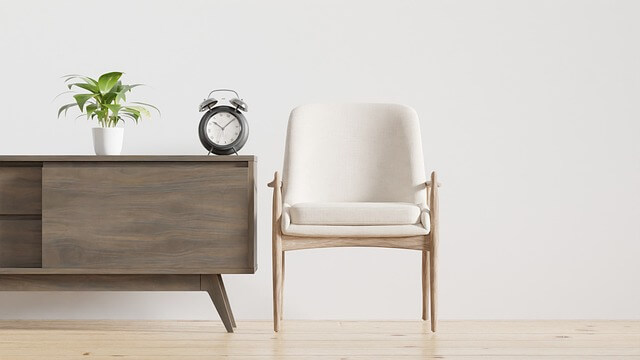Furniture Makers

Introduction to Furniture Making
Furniture making is the art of designing and crafting furniture pieces, from functional items like chairs and tables to intricate decorative objects. It offers the opportunity for creativity and skill development, with home-based workshops being perfect for those who want to design custom pieces for personal use or sale.
Here’s what you should know about furniture making:
- Basic Tools: Hand saws, drills, sanders, and chisels are essential. Advanced setups may include routers, planers, and jointers.
- Materials: You’ll work with hardwoods (e.g., oak, walnut) and softwoods (e.g., pine), depending on your project’s needs.
- Joinery: Techniques like dovetail, mortise and tenon, and pocket-hole joinery ensure strong, durable furniture.
- Finishing: Staining, varnishing, and waxing bring out the natural beauty of the wood and protect your furniture.
Furniture making requires a blend of creativity and precision, and with the right tools, anyone can create durable, professional-looking pieces.
What can be crafted with Furniture Making?
Furniture making allows for the creation of a wide variety of handcrafted pieces, ranging from functional items to decorative objects. Common projects include:
- Tables and Desks: Custom sizes and designs to fit any space.
- Chairs and Benches: Made for both indoor and outdoor use.
- Cabinets and Shelving: For storage and organization.
- Beds and Headboards: Crafted from wood with intricate detailing.
- Dressers and Wardrobes: Custom furniture for clothing and accessories.
- Accent Pieces: Coffee tables, end tables, or small decorative items.
Each project offers an opportunity for personalization and creativity, depending on your style and skill level.
Do Furniture Makers need to be able to create and read plans?
Are there Advancement Opportunities in Furniture Making?
Where can I find Furniture plans? Books? Online?
Here are some resources where you can find furniture-making plans:
Books:
- The Complete Manual of Woodworking – Comprehensive guide with plans and techniques.
- The Furniture Bible – Great for making and restoring furniture.
Online:
- Ana White – Free woodworking and furniture plans.
- Wood Magazine – Furniture plans and resources.
- Instructables – DIY furniture projects from the community.
These resources offer a mix of free and paid plans to suit your needs.
Is Starting a new shop expensive for Furniture Making?
Starting a furniture-making shop can range from approximately $1,150 to $5,500 depending on your setup. Here’s a rough breakdown of what to expect:
- Workbench: $150 – $600
- Basic Hand Tools (chisels, clamps, mallets): $120 – $500
- Power Tools (table saw, router, jointer): $700 – $2,500
- Dust Collection System: $100 – $1,000
- Safety Gear: $50 – $150
- Storage/Organization: $130 – $400
These essentials cover most small to medium furniture projects. Start with basic tools and upgrade as you progress.
Essential Tools for Furniture Making
Furniture making requires a set of essential tools for cutting, shaping, assembling, and finishing wood projects, whether in a home-based or small shop. Here’s what you’ll need:
Measuring and Layout Tools:
- Tape Measure: For accurate measurements.
- Combination Square: Ensures straight lines and right angles.
- Marking Gauge: For precision marking, particularly in joinery.
Cutting Tools:
- Handsaw: Versatile for straight cuts.
- Circular Saw: Cuts large pieces quickly.
- Jigsaw: For curves and intricate shapes.
- Chisels: Necessary for fine joinery and detailed carving.
- Table Saw: For precise, straight cuts.
- Miter Saw: Best for angle cuts.
- Router: Hollowing out and creating edges.
- Drill/Driver: For drilling and driving screws.
Clamping and Assembly Tools:
- Bar Clamps: Holds wood in place during assembly.
- C-Clamps: For smaller holding tasks.
- Workbench with Vise: Keeps your project steady.
Finishing Tools:
- Random Orbital Sander: Speeds up sanding for smooth finishes.
- Hand Planes: Smooths wood surfaces.
- Files and Rasps: Refines edges and curves.
- Wood Finish Supplies: Brushes and finishes like oils and varnishes.
These tools form the foundation of furniture making, enabling efficient, safe, and quality craftsmanship for your projects.
Safety Tools for Furniture Making Applications?
Is Dust a Concern? How can I Mitigate it?
Dust is indeed a major concern in furniture making due to the health risks and fire hazards it poses. Inhalation of fine dust can lead to respiratory problems like asthma or bronchitis, and long-term exposure may result in more serious conditions, including lung disease. Dust accumulation is also flammable, creating fire risks in enclosed spaces.
Ways to Mitigate Dust in Furniture Making:
- Dust Collection Systems: Capture dust at the source with shop vacuums or central systems.
- Air Filtration Systems: Clean ambient air by filtering dust.
- Local Exhaust Ventilation (LEV): Vent airborne dust outside.
- Dust Masks/Respirators: Protect your respiratory system.
- Regular Cleaning: Prevent buildup by sweeping and vacuuming frequently.
By following these practices, you can maintain a safer and cleaner workspace.
Educational Resources for Furniture Making
Here are some helpful educational resources for furniture making, along with their links:
- Fine Woodworking Magazine – Access expert tips, project ideas, and techniques for advanced and beginner furniture makers.
- The Wood Whisperer – Offers tutorials, project guides, and woodworking tips via videos and blog posts.
- Woodworkers Guild of America – Features video tutorials, project plans, and woodworking techniques for all skill levels.
- Instructables – DIY project guides, including step-by-step instructions for building furniture.
- Local Community Colleges – Search for woodworking courses available in your local area.
These resources provide comprehensive support for anyone looking to expand their knowledge in furniture making.
Are there Furniture Making communities or blogs that could be helpful?
Here are some helpful furniture-making communities and blogs with links:
- Woodworking Stack Exchange – A Q&A platform where you can ask questions and share advice with fellow woodworkers.
- LumberJocks – A vibrant community of woodworking enthusiasts sharing projects, ideas, and tips.
- The Woodworking Network – News, trends, and resources for woodworkers, including a community section.
- Ana White – A blog with DIY furniture projects and tutorials.
- The Woodworker’s Journal – Features blogs, project ideas, and woodworking tips.
These communities offer valuable resources and opportunities for collaboration.
Frequently Asked Questions (FAQ)
-
What materials are typically used in furniture making?
Common materials include solid wood (like oak, maple, and walnut), plywood, MDF (medium-density fiberboard), and veneers. Metal and glass can also be used for accents or functional parts. -
Do I need experience to start making furniture?
No, you can start as a beginner with simple projects and gradually advance to more complex designs. Many tutorials and beginner-friendly plans are available online. -
What tools are essential for furniture making?
Basic tools include a tape measure, saws, chisels, clamps, and sanders. Power tools like table saws, routers, and drills are also commonly used. -
Is it necessary to finish or stain furniture?
Finishing or staining protects the wood, enhances its appearance, and extends the furniture’s lifespan. While optional, it’s highly recommended. -
Can I make a living from furniture making?
Yes, many woodworkers sell custom-made pieces or offer furniture repair and restoration services. Starting small and building a portfolio can help grow your business. -
How long does it take to make a piece of furniture?
It depends on the complexity of the project. A simple stool may take a few hours, while intricate designs like cabinets can take several days or weeks. -
Where can I find furniture plans?
Many websites, books, and online communities offer free or paid furniture plans, such as Ana White and LumberJocks.
Ad Notice:
ToolFinder is a site as a free service. We do not charge a fee, and so we have ads on our site to help support development cost and basic time input.
We may also have links on our site to others for products - known as affiliate links - you will Not pay more by utilizing these links, but the merchant would provide ToolFinder a fee for the referral. As an Amazon Associate I earn from qualifying purchases.

